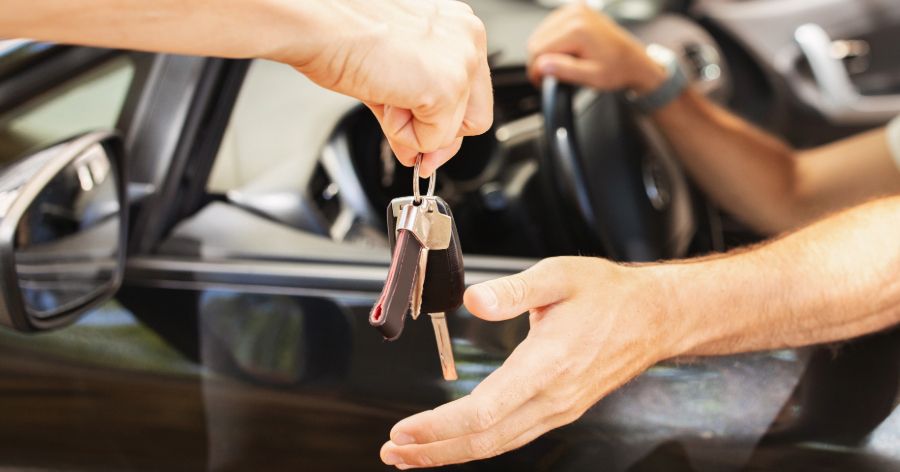
Business vehicle depreciation is severely limited for cars, smaller SUVs, trucks, and vans with an unloaded weight of under 6,000 pounds. Any vehicle with a personal-use nature is listed property, which eliminates section 179 and bonus depreciation and reduces MACRS depreciation to straight-line if the business use is 50% or less.
Key Takeaways
- Depreciation on cars, SUVs, trucks, and vans under 6,000 pounds is limited to $8,000 of bonus depreciation in the first year and is subject to the luxury auto depreciation limits of section 280F in all years.
- Vehicles over 6,000 pounds are not subject to the depreciation limits.
- Some vehicles (usually SUVs) weighing at least 6,000 pounds and less than 14,000 pounds are limited to $28,900 of first-year bonus depreciation.
- Special-use vehicles are not subject to any depreciation limitations regardless of weight.
Considerations for Business Vehicle Depreciation
Four major issues need to be considered to calculate your business vehicle depreciation.
- Section 179 expense
- Bonus depreciation
- Section 280F limitation on MACRS depreciation for luxury vehicles
- Listed property rules
Classifications of Business Vehicles
How each of the four considerations above affects your business vehicle depreciation depends upon the details of your vehicle. Vehicles can fall into one of the six categories below:
- Qualified nonpersonal-use vehicles
- Passenger cars, SUVs, and trucks up to 6,000 pounds
- Pickup trucks with a six-foot or longer bed, box trucks, cargo vans, and nine (or greater) passenger vans that are at least 6,000 but less than 14,000 pounds
- Other SUVs, trucks, and vans at least 6,000 less than 14,000 pounds
- Vehicles over 14,000 pounds with a nature that lends itself to personal use
- Other vehicles over 14,000 pounds
The weight of cars and SUVs is measured as their empty gross vehicle weight (GVW). The weight of trucks and vans refers to their loaded GVW.
The table below summarizes the treatment of the various classifications of vehicles for each of the four issues that must be addressed to calculate your depreciation. Following the table, we’ll provide all the necessary details by vehicle category for you to calculate the depreciation of your vehicle.
Rather than claiming the actual expenses of using your vehicle (including depreciation), most taxpayers can calculate their tax deduction using the standard mileage rate, which is 67 cents per mile for 2024. Read our guide to standard mileage vs actual expenses to learn more.
1. Qualified Nonpersonal-use Vehicles
It’s helpful to consider this category first because if your vehicle qualifies here, then you are done and don’t need to consider any of the other categories. Qualified nonpersonal-use vehicles aren’t subject to any special rules. You calculate their section 179, bonus depreciation, and MACRS depreciation the same as you would for any piece of equipment.
Qualified nonpersonal-use vehicles must fall into one of the following types:
- Police and fire vehicles including unmarked police cars
- Ambulances and hearses used as such
- Vehicles over 14,000 loaded GVW that are designed to carry cargo
- Bucket trucks, cement mixers, dump trucks, garbage trucks, flatbed trucks, and refrigerated trucks
- Combines, cranes and derricks, forklifts, tractors, and special-purpose farm vehicles
- Delivery trucks with seating only for the driver plus a folding jump seat
- Utility repair trucks
- Moving vans
- School buses
- Buses with at least a 20-passenger capacity
- Trucks and vans modified by the installation of permanent shelving and painting the vehicle to display advertising or the company’s name
Pat purchases a hearse to be used exclusively in their funeral home business in 2024 for $80,000. If they meet all the other requirements for section 179, they can deduct all $80,000 of the purchase price in the first year as section 179 expense.
If Pat doesn’t have taxable income, they can’t claim section 179, so they would calculate their depreciation expense like this:
- Like any equipment in 2024, the hearse qualified for bonus depreciation of 60%, or $48,000.
- The remaining $32,000 is depreciated using MACRS depreciation with a useful life of five years.
So, the annual deductions for the hearse are:
MACRS depreciation is calculated using the double declining balance method with a switch to straight-line. You can head over to our MACRS depreciation calculator guide for more details.
2. Passenger Automobiles up to 6,000 Pounds
A passenger automobile for taxes is a vehicle that meets all the following criteria:
- Is a four-wheel vehicle
- Is designed primarily for use on public roads
- Has weight less than or equal to 6,000 pounds
- Is not a qualified nonpersonal-use vehicle
The weight requirement is important as it excludes some SUVs and most pickups and vans from being classified as passenger autos.
Here are the rules for calculating your depreciation-related deductions for passenger automobiles:
- Section 179: No section 179 deduction is allowed for passenger automobiles—except to the extent the maximum first year depreciation allowed under 280F exceeds your regularly calculated MACRS depreciation.
- Bonus depreciation: Maximum bonus depreciation for 2024 is the lesser of 60% of the cost of the passenger auto or $8,000.
- MACRS depreciation: Regular depreciation is calculated using any acceptable method under MACRS but is usually calculated using 200 declining-balance (200DB). However, regular depreciation for passenger automobiles placed in service during 2024 cannot exceed the following amounts:
If you use the passenger automobile for personal purposes, then you must decrease the limits based on your actual business use. For instance, if you use the vehicle for 60% business, then your first year depreciation is limited to $7,440 ($12,400 × 60%).
- Listed property: Passenger automobiles are listed property, so if the business use is 50% or less, then you must use the straight line depreciation method instead of the 200DB—and bonus depreciation is not allowed.
For listed property, there are special reporting requirements and complicated recapture provisions that drop from above 50% to 50% or less business use.
Pat purchases a sedan to use 100% in their business in 2024 for $80,000. Assuming they don’t elect out of bonus depreciation, they calculate their deduction like this:
- Section 179: Pat can’t deduct any section 179 expense since the sedan qualifies as a passenger auto.
- Bonus depreciation: Pat’s bonus depreciation is limited to $8,000.
- Regular depreciation: The annual depreciation expense is limited by the 280F limits given above.
Here is the summary of Pat’s annual deductions:
Assume the same facts as in the prior example, but the sedan is used for 50% business and 50% personal. Because the listed property rules kick in, Pat cannot deduct any bonus depreciation, and MACRS must be calculated using the straight-line method.
3. Vehicles Between 6,000 and 14,000 Pounds
Pickup Trucks, Box Trucks, Cargo Vans, and 9+ Passenger Vans
All vehicles in this category must weigh between 6,000 and 14,000 pounds. While the general description of the vehicles to include in this category suffices for most purposes, the IRS gives a very detailed description of vehicles that belong in this category.
- 9+ Passenger vans: Vehicles with seating capacity of more than nine persons behind the driver’s seat
- Box trucks and some pickup trucks: Vehicles with six foot or longer cargo area (open or enclosed) not directly accessible from the passenger compartment
- Cargo vans: Enclosed driver’s compartment, no seats rear of the driver, and no body section protruding more than 30 inches ahead of the windshield
Here are the rules for calculating your depreciation deductions for these particular types of vehicles:
- Section 179: No special limits apply.
- Bonus depreciation: No special limits apply.
- Regular depreciation: No special limits apply.
- Listed property: These vehicles qualify as listed property, so if the business use is 50% or less, then you can’t deduct section 179 or bonus depreciation, and regular depreciation must be calculated using the straight-line depreciation method.
Pat purchases a Ford F150 pickup truck with a loaded GVW of 7,000 pounds in 2024 for $80,000 and uses it 100% for their construction business. Since the business use is over 50%, the listed property rules don’t affect their deduction, and Pat can claim the same deduction as for any other equipment.
If they have sufficient income and meet the other requirements for Section 179, Pat can deduct the entire $80,000 as section 179 expense in 2024.
If they don’t have taxable income or choose not to elect Section 179, Pat can deduct the cost of the F150 as follows:
Let’s assume the same facts as in the prior example, except that Pat uses the truck for 50% business and 50% personal purposes. This has a drastic effect on their deductions because the listed property rules now apply. They can’t deduct Section 179 or bonus depreciation, and their MACRS depreciation is limited to the straight-line method.
Here is Pat’s depreciation of their $40,000 basis (50% of cost) in the F150:
4. Other Vehicles Between 6,000 and 14,000 Pounds
Vehicles in this category include any van, truck, or SUV that weighs between 6,000 and 14,000 pounds, except
- Pickups, box trucks, cargo vans, 9+ passenger vans
- Qualified nonpersonal-use vehicles
The depreciation for these vehicles is calculated like this:
- Section 179: Section 179 is limited to $28,900 in 2024.
- Bonus depreciation: No special limits apply.
- MACRS depreciation: No special limits apply—unless business use drops to 50% or lower.
- Listed property: Vehicles in this category are considered listed property, so if business use is 50% or lower, then no section 179 or bonus depreciation is allowed, and MACRS depreciation must be calculated using the straight-line depreciation method.
Pat purchases an SUV for $80,000 with an empty weight of 8,000 pounds in 2024 to be used exclusively in their business. They elect to claim the maximum Section 179 and don’t elect out of bonus depreciation. Since the heavy SUV doesn’t qualify as a passenger auto, the 280F limitations do not apply.
Here are Pat’s deductions for each year:
Assume the same facts as in the prior example, except the business use is only 50%. Because the heavy SUV qualifies as listed property, depreciation must be calculated straight-line, and section 179 and bonus depreciation are not allowed.
5. Vehicles Over 14,000 Pounds
Vehicles with a Personal Nature (Motorhomes)
Vehicles over 14,000 pounds are not subject to any special automobile depreciation rules. However, if the vehicle is of a nature that would make personal-use likely, then it qualifies as listed property. Motorhomes are a common example of a vehicle over 14,000 pounds that qualifies as listed property, but there can be others.
- Section 179: No special limit applies.
- Bonus depreciation: No special limit applies.
- MACRS depreciation: No special limit applies.
- Listed property: This category of property is listed property; thus, if business use is 50% or less, then section 179 and bonus depreciation are disallowed, and MACRS depreciation must be calculated using the straight-line depreciation method.
A motorhome will be depreciated in an identical manner to pickup trucks between 6,000 and 14,000 pounds. No special limitations apply unless business use drops to 50%. See the above pickup truck examples for the yearly deductions for a motorhome purchased for $80,000.
6. Other Vehicles Over 14,000 Pounds
Most vehicles over 14,000 pounds don’t have a personal-use nature and are therefore not listed property. These vehicles are depreciated the same as any other piece of equipment. See the calculation for Qualified Nonpersonal-use Vehicles for the yearly deductions for an $80,000 vehicle over 14,000 pounds.
Frequently Asked Questions (FAQs)
You can’t immediately write off a business vehicle that weighs less than 6,000 pounds because section 179 expense is not allowed. However, pickups with a 6-foot or longer bed, 9+ passenger vans, cargo vans, and box trucks that weigh over 6,000 pounds can be written off 100% with a Section 179 election.
For vehicles less than 6,000 pounds, the IRS limits the first year deduction to $8,000 of bonus depreciation, plus $12,400 of MACRS depreciation, for a total of $20,400.
No, but you can deduct the lease payments as an expense. Depending on the vehicle’s value, you might have to decrease your deduction by a lease inclusion amount.
Bottom Line
Business vehicle depreciation is complicated. First, you must decide which sets of rules apply to your vehicle based on the vehicle weight, characteristics, and special usage. The different categories of vehicles calculate their section 179, bonus depreciation, and MACRS depreciation differently. You also must be aware of the special calculations for listed property when the business use is 50% or less.

![what-are-current-liabilities?-how-to-calculate-them-[+-calculator]](https://zabollah.com/wp-content/uploads/2024/06/19458-what-are-current-liabilities-how-to-calculate-them-calculator.jpg)



